 You don’t need permission to dream.
You don’t need permission to dream.
But you do need protection to make that dream a reality.
Otherwise the vultures will destroy your seed before you have a chance to harvest it.
Now, when I say “protection,” I don’t mean registering domain names, buying homeowner’s insurance or trademarking intellectual property.
This is about safeguarding your vision.
Let’s explore a collection of strategies to help you do so:1. Work without a map. The reason you’re obsessed with planning is because it preserves the illusion of control. It underwrites the illusion that you know what you’re doing. When the reality is:
The more you plan, the more you miss unlabeled opportunities to grow.
The more you plan, the harder it is to invite healthy derailments along the way.
The more you plan, the more you prematurely commit to an endeavor that might later prove to be unprofitable.
In Seth Godin’s bestselling book, Linchpin, he explains that people who need a map are going to get paid less and less and work harder and harder every day. “But, the decision that you will live without a map – that you will be less obedient and less compliant – will help you will do work that matters.”
My suggestion: Don’t close yourself off by making gods out of your plans. Don’t let the lust for what is familiar block the beauty of what is possible.
Remember: It’s always safer to work without a map than to follow a rigid plan that has no relationship with reality. Are you a victim of your own topography?
2. If it’s worth dreaming about – it’s worth being attacked for. The more successful you become, the more torpedoes will be shot at you. I know. It’s silly. It’s like the closer your dream comes to fruition, the more pissed off people become.
But, while this is a risky, demanding and unglamorous part of dreaming – that’s what difference makers do: If they’re not polarizing, they’re not monetizing. If they’re not making people react, they’re not making a difference. And if everybody loves what they’re doing, they’re doing something wrong.
Your mission is jack up the danger level of your dream. Consider creating a filter for your own work that reinforces the importance of risk. You might ask, “Who will this idea piss off?” or “How much hate mail will this garner?”
After all, there is an inverse relationship between your willingness to risk and the likelihood of criticism.
The good news is: At least being ridiculed means being noticed. Sure beats being ignored. Your challenge is to interpret criticism as benchmark – not a barrier. After all: If your dream isn’t being attacked, it isn’t big enough. How do you weather ridicule?
3. Keep your goals to yourself. In a recent presentation, Derek Sivers, founder of CD Baby, discovered that telling someone your goal makes it less likely to happen:
“That which is acknowledged by others feels real in the mind. When you tell someone your goal – and they acknowledge it – the social reality tricks you into believing it’s already done. Then, because you’ve felt that satisfaction, you’re less motivated to do the hard work that’s necessary to accomplish it.”
This principle of psychology is called substitution. And the secret, according Sivers, is to delay the gratification brought by social acknowledgment.
Personally, whenever I’m working on a new project, I only tell a select number of colleagues about it. In my experience as an entrepreneur, there is an inverse relationship between how many people you tell about your dream and how quickly that dream becomes a reality.
For example, last week I showed someone copy of my new book. And his response was typical:
“I didn’t even know you were working on another book!”
To which I smiled and replied: “Exactly. And that’s why I got it done: Because you never heard me talking about.”
Look: I’m all for sharing your goals with the world. But I also think it’s easy to blow the lid off your dreams by telling too many of the wrong people about them. Is your lack of self-control slowly dissipating your dream?
4. Keep your dream portable. Although you’ve chosen to keep your goals to yourself, it is important to keep your goals on yourself. Literally. In my wallet, for example, I carry a list of every goal I’ve set for the year – both personal and professional. I also carry a list of my Personal Constitution, along with one hundred answers to the following three questions: Who am I? What do I do? Why do I do it?
These documents comprise my arsenal of self-reflection. It’s how I remember who I am, and it’s how I protect my dream. Sadly, because my wallet is so thick, it’s also how I’ve developed sciatica. Which is fine. If that’s what it takes to protect my dream, so be it. I have health insurance.
The point is: Protecting your dream means never leaving home without it. Your challenge is to create a method to carry your dream with you wherever you go. That way, you can ritually revisit it on a moment’s notice. Which might be helpful during those inevitable times of doubt when the world tries to convince that your dream is stupid. How quickly can you access a tangible version of your vision?
5. Be vigilant about the company you keep. There’s great scene in The Pursuit of Happiness when Will Smith’s character offers the following advice to his son:
“Don’t ever let somebody tell you that you can’t do something. You have to dream, and you have to protect it. Because when people can’t do something themselves, they’ll want to tell you that you can’t do it. If you want something, go get it. Period.”
That’s the dreamer’s reality: When other people see you pursuing it, it scares them. Probably because it reminds them how far away they are from their own dreams.
And what sucks is, they try to talk you out of it.
I don’t know, I guess it makes them feel better about themselves.
My suggestion is: Walk away from people who see nothing but impossibility. Instead of trying to respond to their fear-based reaction, don’t even tell them. Keep your plans to yourself. Not everyone deserves a backstage pass to your dream. Tell the few people who matter most and then get back to work. Are you gushing to people who are going to belittle your ambitions?
6. Independence is more important than improvement. The best way to protect your dream is to ignore the people who try to improve it. With the exception of a chosen few – whose honest, helpful feedback matters most – make a conscious to ignore most people’s suggestions.
Sure, they might make your dream ten percent better – but you’ll feel thirty percent crappier. And in my opinion, that’s a tradeoff that isn’t worth it.
Try this: Forget about getting things right and focus on getting things moving in the right direction. Because you don’t need more areas of improvement – you need more actions of execution. That’s why I have the following mantra written on the wall over my desk: “Finished is the new perfect.”
Or, as Hugh MacLeod wrote in Ignore Everybody, “The more original your idea is, the less good advice people will be able to give you.”
Look: You’re the only one waiting for you to get everything right. Trust your inner resources; believe that you’re the person who can do this – then execute with all your might. There is no stronger protection from the would-be deflectors of your dream. Who is trying to edit you?
REMEMBER: You don’t need permission to dream.
But if your dream gets kicked in the crotch, it’s because you stopping blocking.
Safeguard it. Protect it. And keep it away from dangerous people.
In time, it will stop being a dream and start becoming a reality.
LET ME ASK YA THIS…
Is your dream protected?
LET ME SUGGEST THIS…
For a list called, “153 Quotations to Inspire Your Success,” send an email to me, and you win the list for free!
* * * *
Scott Ginsberg
That Guy with the Nametag
Author, Speaker, Entrepreneur, Mentor
[email protected]
 “I usually refuse to pay for mentoring. But after Scott’s first brain rental session, the fact that I had paid something to be working with him left my mind – as far as I was concerned, the value of that (and subsequent) exchange of wisdom and knowledge, far outweighed any payment.”
“I usually refuse to pay for mentoring. But after Scott’s first brain rental session, the fact that I had paid something to be working with him left my mind – as far as I was concerned, the value of that (and subsequent) exchange of wisdom and knowledge, far outweighed any payment.”
–Gilly Johnson The Australian Mentoring Center
Rent Scott’s Brain today!
 Congratulations to Watson, the artificial intelligence program who recently wiped the Jeopardy floor with reining champions, Ken Jennings and Brad Rutter.
Congratulations to Watson, the artificial intelligence program who recently wiped the Jeopardy floor with reining champions, Ken Jennings and Brad Rutter.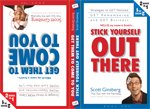 The world’s FIRST two-in-one, flip-flop book!
The world’s FIRST two-in-one, flip-flop book!
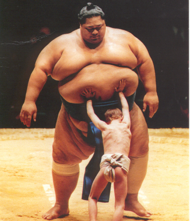 If size mattered, dinosaurs would still be around.
If size mattered, dinosaurs would still be around.
 You’ve chosen an uncertain path.
You’ve chosen an uncertain path.
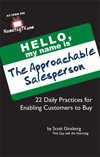
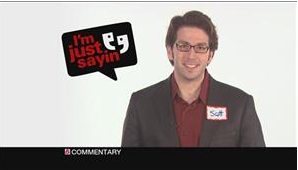 My local television station recently started a new segment called,
My local television station recently started a new segment called, 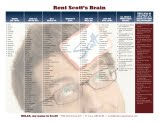 “I usually refuse to pay for mentoring. But after Scott’s first brain rental session, the fact that I had paid something to be working with him left my mind – as far as I was concerned, the value of that (and subsequent) exchange of wisdom and knowledge, far outweighed any payment.”
“I usually refuse to pay for mentoring. But after Scott’s first brain rental session, the fact that I had paid something to be working with him left my mind – as far as I was concerned, the value of that (and subsequent) exchange of wisdom and knowledge, far outweighed any payment.” You’ve chosen an uncertain path.
You’ve chosen an uncertain path. You’ve chosen an uncertain path.
You’ve chosen an uncertain path.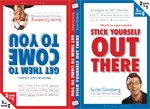 The world’s FIRST two-in-one, flip-flop book!
The world’s FIRST two-in-one, flip-flop book! You don’t need permission to dream.
You don’t need permission to dream. “I usually refuse to pay for mentoring. But after Scott’s first brain rental session, the fact that I had paid something to be working with him left my mind – as far as I was concerned, the value of that (and subsequent) exchange of wisdom and knowledge, far outweighed any payment.”
“I usually refuse to pay for mentoring. But after Scott’s first brain rental session, the fact that I had paid something to be working with him left my mind – as far as I was concerned, the value of that (and subsequent) exchange of wisdom and knowledge, far outweighed any payment.” You’ve chosen an uncertain path.
You’ve chosen an uncertain path. The world’s FIRST two-in-one, flip-flop book!
The world’s FIRST two-in-one, flip-flop book! Who’s quoting YOU?
Who’s quoting YOU?